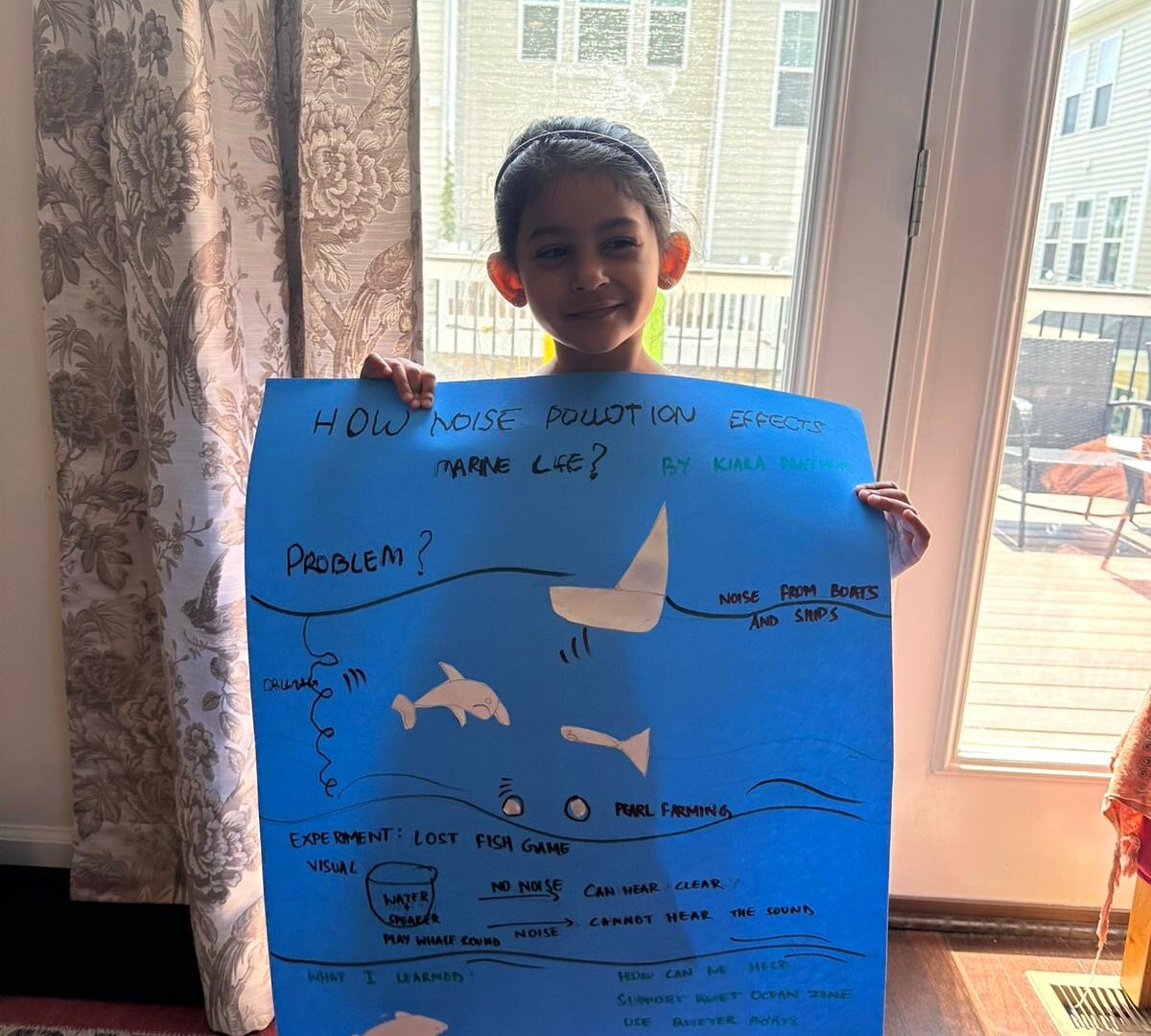The Problem
Our oceans are alive with sound, but human activity—such as shipping, drilling, and motorized boating—has created noise pollution that drowns out the natural voices of marine life. Whales, dolphins, and fish rely on sound to communicate, navigate, and survive. If they cannot thrive, the entire marine ecosystem begins to break down—food chains are disrupted, species decline, and the balance that keeps our oceans healthy is lost. Since oceans regulate climate, produce oxygen, and support life on Earth, what harms them ultimately harms us too.
Our Plan
Building on our U.S. Presidential Environmental Youth Award project The Ocean Has a Voice, we are inspiring young people to protect the ocean and our planet. We want to begin with small, achievable steps that create awareness and spark change: 1. Interactive Experiment at School – demonstrate how sound travels underwater using simple materials (like tuning forks, bowls of water, or speakers in water tanks) so children can “see” and “hear” the effects of noise. 2. Awareness Posters & Storytelling – design creative posters and a short storybook from a whale’s perspective (“The Ocean Has a Voice”) to share at school, libraries, and community centers. 3. Community Pledge – invite families to sign a pledge to reduce ocean harm (less single-use plastic, quieter ocean tourism, supporting marine-safe companies). 4. Partnerships with Local Aquariums – reach out to aquariums to display our posters or host a talk on underwater noise. 5. Digital Awareness Campaign – create short videos or reels that explain noise pollution in simple terms and share them on Roots & Shoots and social media.
